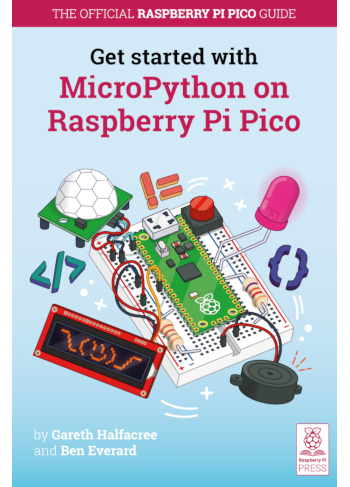
Within the special dedicated Raspberry Pi Pico section of the annual is my two-page introduction to the board, an in-depth spread covering its specifications and the various components which make up the hardware – with plenty of high-quality photography, taken in my in-house studio – and an explanation of exactly what a microcontroller is and how the RP2040 at the heart of the Raspberry Pi Pico works.
You’ll also find my guide to programming the Pico in MicroPython and C/C++, an interview with chief operating officer James Adams and senior engineering manager Nick Francis, comment from Eben Upton, a simple hardware “hello, world” tutorial in MicroPython, and a step-by-step guide to safely soldering headers onto the Raspberry Pi Pico’s general-purpose input/output (GPIO) pins.
There’s also a brief overview of my book, Get Started with MicroPython on Raspberry Pi Pico – which, for those who want to explore the topic further, is available as a free PDF download under a Creative Commons licence.
The Official Raspberry Pi Handbook 2022 is available in all good newsagents and bookstores now, online with global delivery, or as a DRM-free download under a permissive Creative Commons licence.









